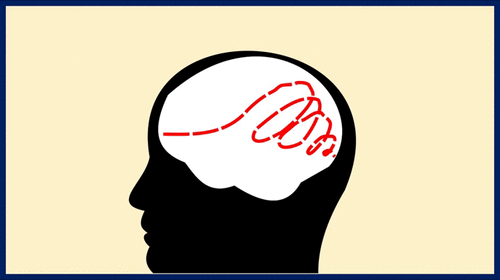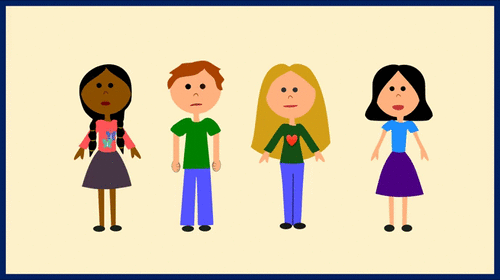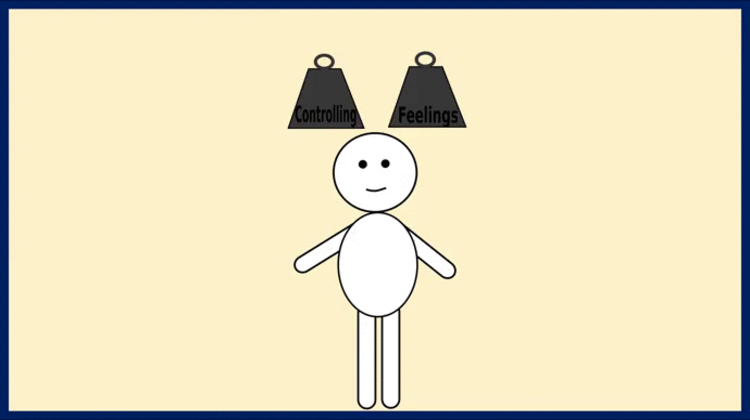.png)
No-prep interactive lessons on social, emotional, and mental health for teachers & parents
Mindfulness
How to Introduce the Topic to Teens
Short on time? Need to teach this now?
INTRO
Mindfulness is a great tool to use to deal with difficult emotions, but it is often misunderstood. Many people describe it simply as "being in the moment"–and while this is part of, it misses the first part of mindfulness, the foundation of mindfulness, which is learning to accept all emotions without judgment.
Many students have difficulty accepting emotions, and by desperately trying to avoid any painful emotion, they actually make the problem worse. But it can be difficult to recognize the connection between trying to avoid painful emotions (which seems natural and even helpful) and problems like depression and anxiety.
I like to teach the science behind mindfulness so students can see just why it works, in less wishy-washy terms than sometimes get used with mindfulness, and with abstract concepts in general.
When students understand the why, they are much more interested in implementing the how.
HOW TO TEACH
1) Why emotions get "stuck"
Emotions are transient by nature. They come, they stay a while, then they leave. Some stay for a short time, some stay for an agonizingly long time, but they do leave. Even heavy, all-consuming pain like acute grief will ebb and flow and lessen in intensity with time. Emotions usually pass in a healthy time, if we let them.
But sometimes, emotions get stuck. You may question why you've felt so sad, so anxious, so angry for so long.
Many times the reasons emotions get stuck is because we try to avoid all painful emotions. We want to feel good all the time. But this isn't how our bodies work. Avoiding or ignoring painful emotions makes them persist.
I relate this to how our body uses its nervous system to alert us when we are hurt. It sends a signal so we can be aware of an injury, and if necessary attend to it.


Emotional pain is similar to physical pain. When you feel a painful emotion, it is your brain trying to signal to you to be aware of a problem or to attend to something, just like with physical pain.
We then talk about what would happen if they never felt any physical pain, such as walking on a broken leg without realizing it. Then we compare this to emotional pain. Although it often doesn't seem like it at the time, painful emotions are helpful and necessary. We talk about what would happen if we never felt painful emotions like fear, guilt, or frustration.

If you push away or avoid painful emotions when your brain is trying to send you a signal, and you don’t let yourself feel it, it’s as though your brain needs to keep sending the signal. Since your brain thinks you’re not getting the message, It’ll try again, and again, in bigger ways. The more you resist feeling the painful emotion, the harder your brain tries to alert you. Soon, something that might have only been a minor pain can become a HUGE problem.

In a way, it’s like each emotion has a path it needs to complete before it can leave. In someone who accepts an emotion, it will come, follow its path, and leave. If you try to get rid of the emotion before it’s finished its path, it’s like it has to start all over again. The more you push it away, the more it has to start over, and soon the path gets deeper and longer. Now it has trouble leaving on its own even after you accept it, because the path is so deep and long. The next time you feel sad, it’s more likely to go on the long, deep path you created before.Now even a small amount of sadness that would normally pass quickly can get stuck and spiral out of control.
We might avoid dealing with emotions by doing things like overeating, playing video games, binge-watching shows, or turning to drugs or alcohol. All of these things make the painful emotion go away temporarily, but then it returns with a vengeance (and grows!) until we actually allow ourselves to accept it, feel it, and process it.
Another way for an emotion to get stuck is by fueling it. This would be like sitting and listing all the terrible things in your life when you feel sad. This is going to make the emotion take a longer path than is healthy.
Mindfulness can stop these thoughts from spiraling out of control, and it can help you heal the downward spiral paths you may have already created.
Healthy Mind

Unhealthy Mind

2) Recognize how our body and mind react to different emotions.
Before we can learn to accept emotions, we need to recognize them. Little kids tend to be good at being in the present and being in tune with their emotions. They don't hide anything. If a toddler is sad, you know it. But as we age, we tend to start becoming detached from both our mind and body. We spend a lot of time living in our head, and little time paying attention to how we are feeling. It has become especially easy to tune out from the present and detach from ourselves with technology like smart phones.

It's important to learn how to recognize how your mind and body react to different emotions. When you feel any emotion, try to ask yourself, how is my body reacting to this emotion? What is my mind telling me? Try doing a couple experiments to get students aware of how they experience emotions. Here's a couple fun ideas:
1) Have a volunteer (who you know would be comfortable) stand up and tell a story about their summer or something similar. Instruct everyone in the audience to act bored during the whole story. Have the volunteer note how their body and mind reacts. Did they sweat? Did they get butterflies? What thoughts went through their mind? What judgments did they attach to those thoughts? The audience will likely feel some secondhand embarrassment from watching it and can note how they react as well.
2) Pretend you've preselected a student in the class to stand up and sing a solo in front of the class. Have a paper on the board that you will take off to reveal the name after a countdown. Of course, there is no preselected student. This is to get them to recognize how their body reacts to anxiety as you countdown.

3) Recognize what gets in the way of accepting emotions.
Accepting emotions is at the heart of mindfulness. For an emotion to pass in a healthy manner, it has to be acknowledged and felt. Something that can get in the way of accepting emotions is the judgments we attach to them. Sometimes you have to look deeper to realize what kinds of things you're telling yourself when you experience a painful emotion.
Things that get in the way of accepting emotions:
1) Judging whether we should feel an emotion: Often we will tell ourselves we shouldn't feel something. I shouldn't be angry, sad, upset, etc. I should be happy. I should get over this! I need to just get rid of this sadness/anger/anxiety once and for all! It's not normal to feel this way. No one should have to feel like this! All of these judgments get in the way of just letting yourself feel something.
In addition to this, we can also start attaching judgments about ourselves to an emotion. We might start with an emotion of sadness. As that comes, we might have the judgment like "I should not feel sad. I have so much good in my life, I need to just snap out of it." And then from there can come a judgment about ourselves like, "There is something wrong with me. I am so ungrateful. I'm hopeless."

2: Blaming the emotion on someone/something else: Another thing that gets in the way of accepting emotions is blaming someone else for how you feel. Often we sort of create expectations for ourselves, sometimes without realizing it, such as, "I don't get angry at people. I'm not that kind of person." But then of course, we all get angry. So when that happens, to still hold onto that concept we've created of ourselves, we need someone else to be responsible for our emotions.
"I have a good hold on my temper, so the only reason I am feeling angry is because someone must have made me feel this way. Otherwise, I would be above this emotion. It's someone else's fault."
Obviously we don't use those exact words, but underneath sometimes we refuse to accept emotions because we refuse to let ourselves be the kind of person who feels those things. We shift blame and responsibility of managing the emotion onto someone else, and this makes the emotion persist.
It's also a way to avoid responsibility for fixing things in our lives. If we blame an emotion entirely on someone else, we absolve ourselves of any responsibility in fixing it. But whether someone else is responsible for how we feel or not, we still have to be the ones to accept it, process it, and manage it. No one else can do that for you, and avoiding dealing with pain because you feel wronged simply makes the pain last longer and grow.
Words like "should" and "shouldn't" or labels about yourself like, "lazy" or "worthless" are clues that you are judging your thoughts instead of accepting them.

4) Practice accepting emotions without judgment
Use examples to help students recognize what kinds of judgments they may be attaching to their thoughts, like deciding if an emotion is good or bad, or giving themselves a harsh label based on an emotion they are feeling. They need to learn to just sit with an emotion instead of trying to control it.

It's hard to sit with a painful emotion. But with some background about how painful emotions are helpful and necessary, and that avoiding them or controlling them will make them persist, it makes it easier to just let them be and let them pass when they're ready.

5) Practice mindfulness meditation exercises
Sometimes accepting emotions isn't enough to get it unstuck when you've already built up a long spiral path. Your brain will want to go down that path every time because it's so efficient and well-worn. Sometimes we need an extra kick after we accept an emotion.
Mindfulness meditation provides that extra kick.
We have a mind and a body and both need to be used for us to be healthy and thriving. As children, we often live fully in the moment, experiencing everything through sight, sound, smell, and touch. But as we get older we often live much more in our minds than in our bodies. We get stuck replaying scenes from the past, or obsessing over the future. Learning to start being more in the present by experiencing things with our mind and body can help us be healthier and happier, and it can help heal some unhealthy downward spirals we may have previously created.

Try introducing some simple mindfulness meditations like mindful breathing, mindful listening, mindful walking, or a body scan. Mindfulness meditation exercises often follow a simple script that you could put together as a teacher. Start by having the students close their eyes and focus on the breath for a few minutes, in and out, in and out. Then move on to expanding awareness, to the sounds outside, to the smells, or to different parts of their body.
Mindful eating is a great exercise to try with students as well. Give each student a raisin and go through a script like this:
Pick up the raisin between two fingers. Turn the raisin over in your hand. What does it feel like? Inspect the raisin closely. What is the texture? What color would you describe it as? Is it squishy, soft, hard? Do you like or dislike the way it feels? Now bring the raisin to your nose and smell it. What does the smell remind you of? Is it pleasant, neutral, or unpleasant? Now bring the raisin to your mouth and feel it with your lips and note its texture. Put the raisin on your tongue and turn it over in your mouth a few times without chewing. How does it feel inside your mouth? Is it what you were expecting? Slowly being to chew the raisin. What teeth are you using? Does the raising travel around your mouth as you chew? Do you enjoy the flavor? Be mindful of each time you chew, then get ready to swallow. As you swallow, be mindful of the raisin traveling down your throat. Can you feel it as it goes down?
You can find many example guided meditations to work though with the class. As distracting thoughts come into their mind, guide them to note the thought, and then let it go. No judgment. No excessively trying to control thoughts. Just note the distraction and then try to return to whatever you were focusing on before, the breath, sounds, the raisin.
I hope some of these tips help you when teaching your students! Please let me know if anything helped, I'd love to hear some feedback.
Thanks,
Eve
Short on time? Need to teach this now?